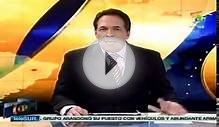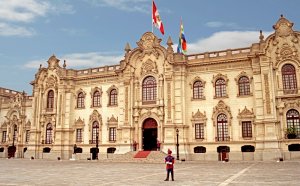
Viceroyalty of Peru
Viceroyalty of Peru Spanish Virreinato de Peru, the 2nd for the four viceroyalties that Spain designed to control its domain names into the Americas. Established in 1543, the viceroyalty initially included all of South America under Spanish control except for the coast of what is now Venezuela. It later destroyed jurisdiction (aided by the development of the Viceroyalty of the latest Granada in 1739) across areas that today constitute the nations of Colombia, Ecuador, Panama, and Venezuela and, later nevertheless (using the organization for the Viceroyalty of Río de la Plata in 1776), over understanding today Argentina, Uruguay, Paraguay, and Bolivia.
Until nearly the termination of the colonial era, Peru ended up being considered many important Spanish ownership in Americas. It produced vast degrees of gold bullion for cargo to Europe, specially from the mines at Potosí. Thriving on the implemented labour of Indians, an exploitative culture of my own operators and vendor princes lived-in splendour within the seaside town of Lima. Use of easy wealth, however, was among the significant contributing factors to political instability in the area. Geography had been another; Lima’s place over the western coast of south usa limited efficient communication with Spain, while the rigours of the terrain (the Andes Mountains) made Peru very hard to control.
From 1569 to 1581, the Viceroyalty of Peru obtained some much-needed steady management from the viceroy Francisco de Toledo. Considered the best of Peru’s viceroys, Toledo refurbished the management, given particular rights of autonomy towards Indians, and modernized mining operations. His successors—most notably the Marqués de Montes Claros (1607–15), Francisco de Borja y Aragón, Prince de Esquilache (1615–21), Don Pedro Antonio Fernández de Castro, 10th amount de Lemos (1667–72), and Melchor Portocarrero Lasso de la Vega, amount de los angeles Monclova (1689–1705)—were in most cases impressive males and able directors.
By the late 18th century, but the Viceroyalty of Peru was badly looking for reform. Exploitation associated with Indians had led in 1780 to your brief but bloody rebellion of José Gabriel Condorcanqui (or Túpac Amaru, as he wanted to call himself, after their Inca ancestor). This revolt distribute throughout Peru, and, although Túpac ended up being grabbed and executed in 1781, the Indians continued to wage war resistant to the Spaniards until 1783, causing disturbance of the viceroyalty’s financial life. The seaside area had been incapable of attach a vigorous security when General José de San Martín joined Lima and declared Peru’s liberty from Spain in July 1821. After that, on Dec. 9, 1824, the Spanish royal army—despite an edge in manpower and arms—lost the Battle of Ayacucho when you look at the Andean highlands to a revolutionary army under Antonio José de Sucre. The viceroy of Peru and his generals were taken prisoner, and what was remaining associated with area that had been the Viceroyalty of Peru became an element of the independent countries of Peru and Chile.
RELATED VIDEO
![[PDF Download] Crisis and Decline: The Viceroyalty of Peru](/img/video/pdf_download_crisis_and_decline_the.jpg)

Share this Post
Related posts
Tours of Peru Machu Picchu
Inside the mountains of Peru lies a great deal of old Inca temples, Spanish colonial towns, and spectacular Andean vistas…
Read MoreLima, capital of Peru
Lima is attached to the various seaside cities of Peru, plus the neighbouring nations of Chile and Ecuador, by the Pan-American…
Read More
 Created in 1542, the Viceroyalty of Peru (Spanish: Virreinato del Perú) was a Spanish colonial administrative district that originally contained most of Spanish-ruled South America, governed from the capital of Lima. The Viceroyalty of Peru was one of the two...
Created in 1542, the Viceroyalty of Peru (Spanish: Virreinato del Perú) was a Spanish colonial administrative district that originally contained most of Spanish-ruled South America, governed from the capital of Lima. The Viceroyalty of Peru was one of the two...

